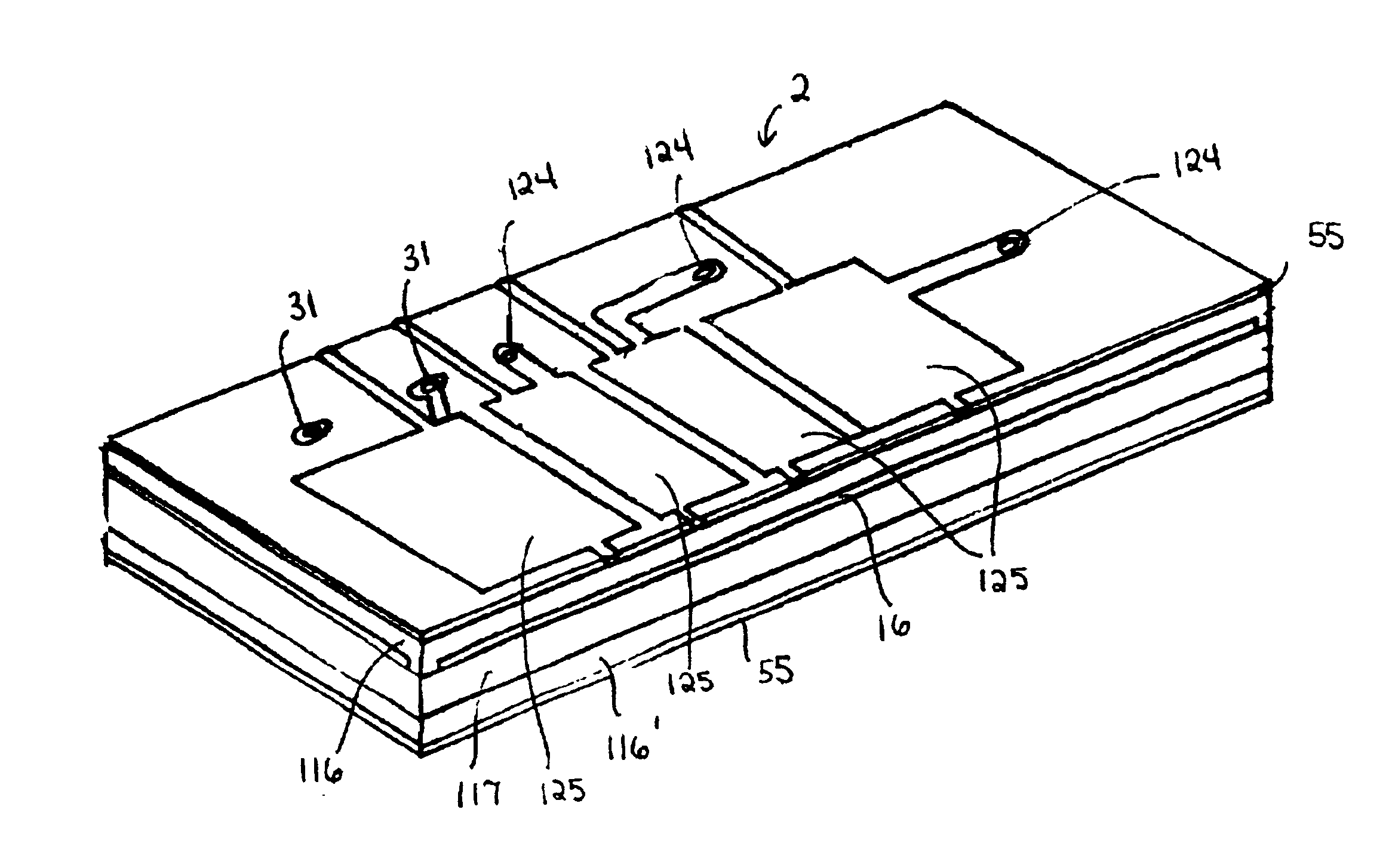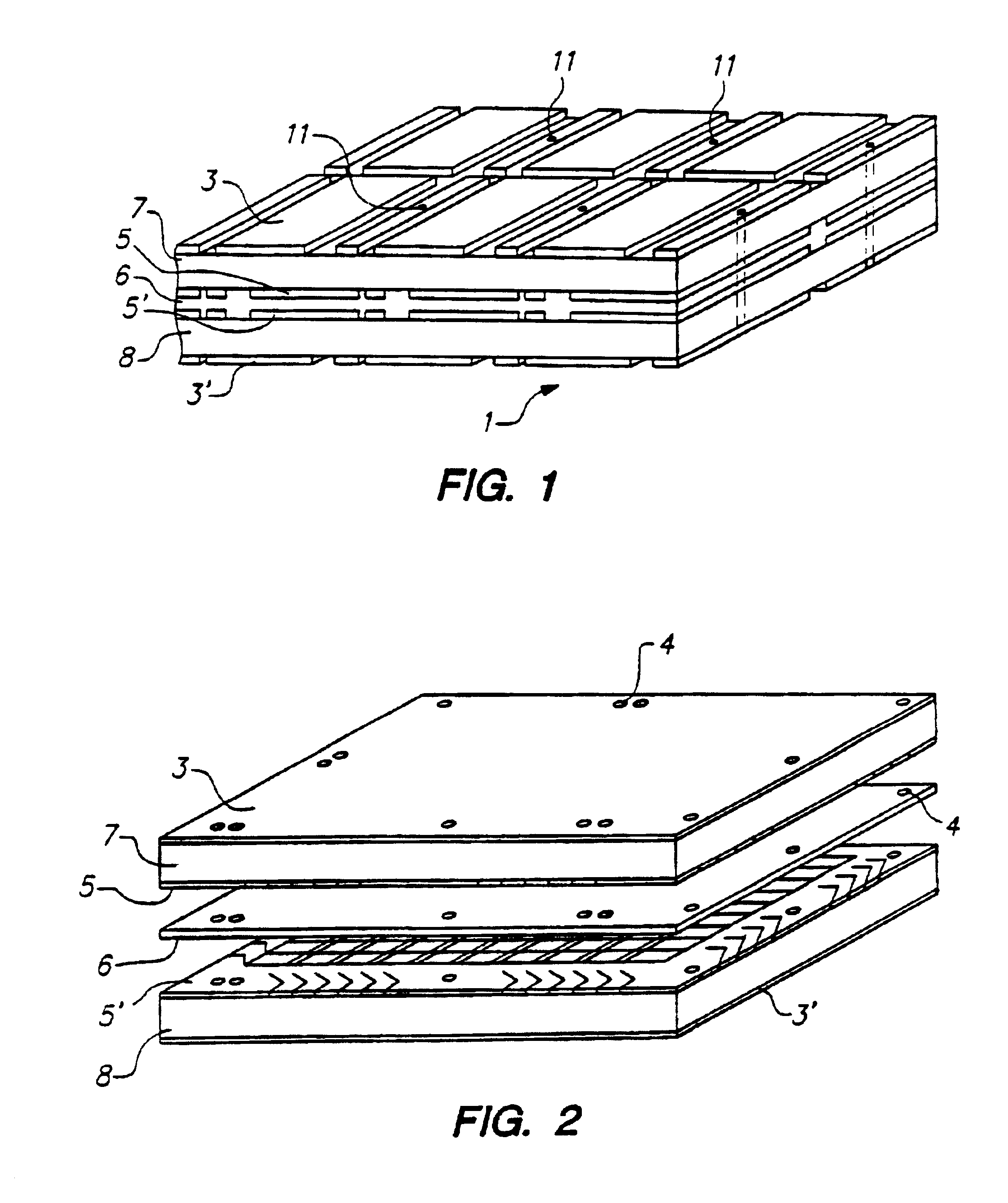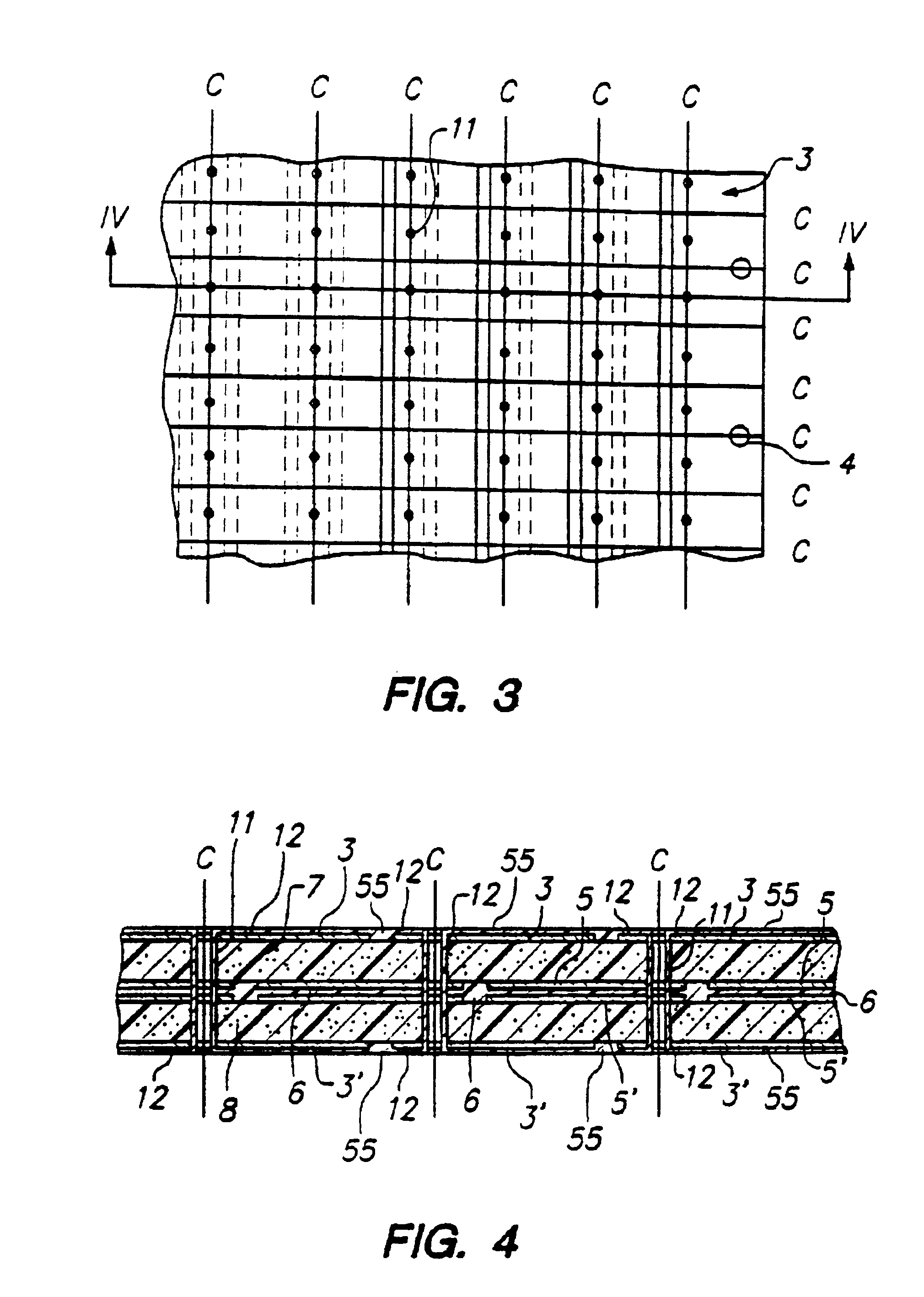Process for manufacturing a composite polymeric circuit protection device
a protection device and polymer technology, applied in the direction of positive temperature coefficient thermistors, printed element electric connection formation, conductive pattern formation, etc., can solve the problem of tedious process, and achieve the effect of simple device build-up and inexpensive mass production
- Summary
- Abstract
- Description
- Claims
- Application Information
AI Technical Summary
Benefits of technology
Problems solved by technology
Method used
Image
Examples
example 1
A stack in accordance with FIGS. 1 and 2 was prepared by the following method. Two laminates, each having a thickness of about 0.264 mm (0.0104 inch) were prepared by attaching an electrodeposited nickel / copper foil having a thickness of about 0.0356 mm (0.0014 inch) to both sides of a 0.193 mm (0.0076 inch)-thick sheet of conductive polymer. The conductive polymer was prepared by mixing about 40% by volume carbon black (Raven™ 430, available from Columbian Chemicals) with about 60% by volume high density polyethylene (Chevron™ 9659, available from Chevron), and then extruding into sheet and laminating in a continuous process. The laminated sheet was cut into individual laminates of 0.30 m×0.41 m (12 inch×16 inch). The laminates were irradiated to 4.5 Mrad using a 4.5 MeV electron beam.
Each of the laminates was drilled in an asymmetric pattern around its the periphery to provide holes and slots to register the laminates in a known x-y orientation in the plane of the laminate. These ...
example 2
A stack in accordance with FIG. 24 was prepared by the following method. Three laminates were prepared, irradiated, and drilled with registration holes as in Example 1. Four layers of modified acrylic adhesive as in Example 1, and two layers of 1 oz. Cu foil (0.034 mm (0.00135 inch) thick) which was grey-oxide treated on one side were also drilled with registration holes suitable for alignment. Using the etching technique of Example 1, the outer surfaces of both foil electrodes on all three laminates were patterned to define the periphery of the individual devices and the residual conductive members, and to define the alternating cross directional pattern on the periphery of the panel.
A stack was formed by positioning one layer of the Cu foil on the bottom (treated side up), followed by one adhesive layer, the three laminates with their pattern-matched etched sides oriented in the fixture and with an adhesive layer sandwiched in between each layer, followed by one adhesive layer on ...
example 3
A stacked assembly in accordance with FIG. 26 was prepared by the following method. One laminate having a thickness of about 0.198 mm (0.0078 inch) was prepared by attaching an electrodeposited nickel / copper foil having a thickness of about 0.0356 mm (0.0014 inch) to both major sides of a 0.127 mm (0.005 inch)-thick sheet of conductive polymer. The conductive polymer was prepared by mixing about 37% by volume carbon black (Raven™ 430) with about 10.5% by volume high density polyethylene (Petrothene LB832, manufactured by Equistar) and about 52.5% ethyelene / butyl acrylate copolymer (EBA705, manufactured by Equistar), as in Example 1, and then extruding into sheet and laminating in a continuous process. The laminated sheet was cut into individual laminates of 0.10 m×0.41 m (4 inch×16 inch).
The laminate was drilled with registration holes as in Example 1 and with holes having a diameter of 1.27 mm (0.050 inch) to create apertures in the laminate. Four layers of 0.038 mm (0.0015 inch)-t...
PUM
| Property | Measurement | Unit |
|---|---|---|
| resistance | aaaaa | aaaaa |
| resistance | aaaaa | aaaaa |
| resistance | aaaaa | aaaaa |
Abstract
Description
Claims
Application Information
 Login to View More
Login to View More - R&D
- Intellectual Property
- Life Sciences
- Materials
- Tech Scout
- Unparalleled Data Quality
- Higher Quality Content
- 60% Fewer Hallucinations
Browse by: Latest US Patents, China's latest patents, Technical Efficacy Thesaurus, Application Domain, Technology Topic, Popular Technical Reports.
© 2025 PatSnap. All rights reserved.Legal|Privacy policy|Modern Slavery Act Transparency Statement|Sitemap|About US| Contact US: help@patsnap.com



